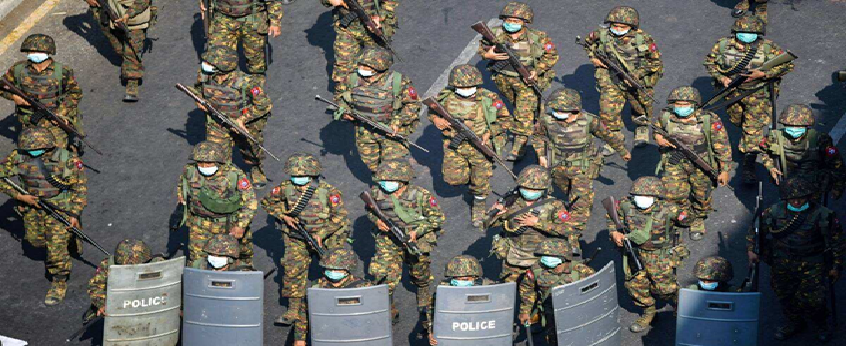India Must Prioritise Stability in Myanmar
17, Feb 2022

Prelims level : Geography
Mains level : GS-III IR India and its Neighbourhood- Relations.
Why in News?
- One year ago, the Military in Myanmar attempted to grab power from the elected civilian Government in a Dramatic Coup. Meanwhile, the deposed civilian lawmakers who were elected in free-and-fair elections in November 2020 put together their own government known as the National Unity Government (NUG).
The Current Situation in Myanmar:
- The coup faced popular resistance from the first day, with mass protests bringing the Country to a halt.
- According to the Assistance Association for Political Prisoners, as of January 28, 1,499 Civilians have been killed in Myanmar since the coup.
- Dozens of civilian militias, called People’s Defence Forces (PDF), now armed with more sophisticated weapons, mushroomed in nearly every region and state.
- Today, the military is having to fight on multiple fronts, as even powerful ethnic armed Groups in the north, northwest and east have joined forces with the PDFs.
- India’s approach towards situation in Myanmar
- Balanced approach: Since the coup, India has taken a balanced diplomatic approach on Myanmar, calling for restraint, restoration of democracy and release of political prisoners, but also maintaining its lines of communication with the military.
- Avoiding sanctions: India has also firmly stayed away from imposing sanctions on the Junta.
- In December, India’s Foreign Secretary broke the diplomatic freeze and visited Myanmar, during which he met the junta chief, members of the key opposition party, National League for Democracy (NLD), and civil society members.
Why does India need to Recalibrate its Approach?
- The last 12 months have made it clear that the military is incapable of providing the kind of political, economic and social stability that India needs in Myanmar to advance its interests, including development projects.
- Public faith in the military as a state institution is at its lowest.
- Northeastern border issue: For New Delhi, India’s Northeastern border with Myanmar remains on top of the bilateral agenda.
- However, even on this, the military has damaged whatever semblance of stability was left.
- Sagaing region, which borders three Northeast Indian states, has seen the highest number of clashes so far.
- Chin state, bordering Mizoram and Manipur, has seen dramatic military offensives in civilian areas, which have forced thousands to flee into India.
- The Myanmar military has roped in Manipuri insurgents as mercenaries to attack anti-junta forces, in Exchange for safe haven.
Way Forward:
- New Delhi must reconsider its partnerships in Myanmar and invest in those entities that can not only provide a stable political environment overall, but also effectively secure its security interests along the border.
- The NUG enjoys much more mass popularity than the military, which means it is in a position to restore calm.
- China has strong links with ethnic armed groups in northern Myanmar, but not with the new PDFs.
- So, if India really wants to offset Chinese influence in Myanmar, it needs to take this opportunity to forge New Friendships.






